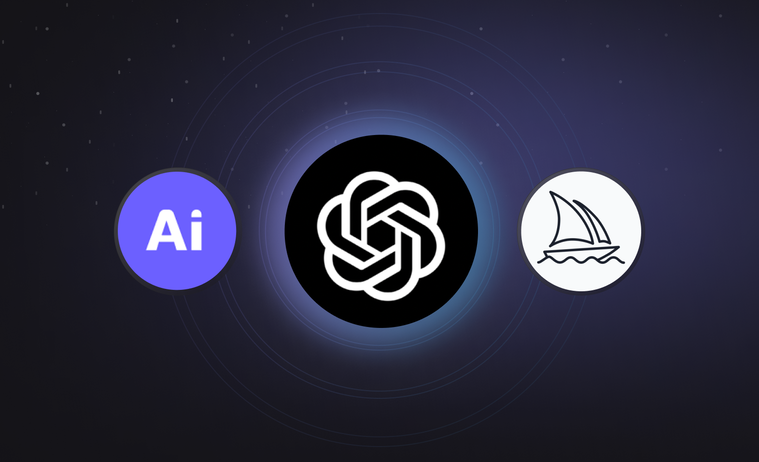Top 3 Generative AI Use Cases for Hard Tech
2022 saw many hard tech startups emerge with a bid to solve real problems in fields like health, agriculture, and energy security. Hard tech's comeback was a welcome change for investors, too, who wanted to chase big ideas instead of the next social media app. In the words of Peter Thiel, "we wanted flying cars; instead, we got 140 characters," and some people took issue with that.
Generative AI's sudden rise to fame dominated headlines in the last few months. From tools like Lensa and Midjourney that help you generate visuals to ChatGpt and GPT-4, which you can use for creating various kinds of content, generative AI looks poised to transform marketing and content production. However, is there anything in all this for people who want to tackle hard problems? Can generative AI make life easier for entrepreneurs pursuing hard tech projects? We have three cases that demonstrate that it can.
Drug discovery
Developing new drugs is one of the most capital-intensive and time-consuming industrial processes. According to the consultancy firm Deloitte, the top 20 pharmaceutical companies spend an average of $2.3 billion on research and development of new drugs. On average, it takes 12 years to bring a new drug to market. Drug discovery stands out as one of the most promising use cases for generative AI because any reduction in the cost of developing drugs and accelerating clinical trials can save lives.
An early mover in this field is Absci, which uses machine learning to figure out the relationship between a gene sequence and the function of a protein. The company employs generative AI to engineer E. coli and develop antibodies that will bind to specific targets in a single trial without having to run the full design cycle to exhaust all possibilities. The generative AI approach shrinks the time frame to develop antibodies from the five and a half years it took in the past to 18 to 24 months and improves the 4 percent success rate of the previous method. This breakthrough opens the door for us to a future wherein we can have personalized drugs for illnesses.
Materials discovery
It turns out that generative AI has capabilities other than making up pseudo-scientific explanations for scientific inquiries. Researchers have recently been using it to speed up the usual cycle of scientific research that consists of forming hypotheses, testing them, and iterating on the original question.
Victor Fung, an assistant professor from Georgia Tech, demonstrated one of the more creative uses for generative AI. In layman's terms, Fung developed an algorithm that studies the structure of materials possessing required properties. This technique allows scientists leveraging generative AI to build new materials with desired properties via a technique called inverse design. Basically, it will be possible to pick and choose specific attributes and create materials that are purpose-built and customized to individual specifications.
Studies carried out by IBM Research illustrate the practical applications of this technology. IBM's generative AI model studies a data set of known molecules and their corresponding properties. Then, scientists determine the parameters they want in a material like the photoacid generator (PAG), a material used in semiconductor manufacturing, and the model comes up with all the possible configurations for scientists to choose from. In other words, the model works backward from the desired properties of the PAG to reverse engineer the molecules that fit the bill. Thanks to generative AI, scientists were able to develop an innovative method that reduces from ten years to ten months the time it takes to discover a new molecule.
Manufacturing
Generative AI has the potential to revolutionize the manufacturing industry as it can introduce efficiencies into every single process, redesign components, and discover new materials. It can help reduce the complexity of processes and designs and bring down costs as a result. The industry will be able to do more with less and become more agile as generative AI comes to play a bigger role.
Airbus has been reaping the benefits of generative AI for quite some time. The European aerospace giant used this novel approach to manufacture a partition wall for its Airbus A320 aircraft. The Airbus design team started with the target attributes they wanted to achieve and let the algorithm explore all the possible permutations of parameters that produce the desired goal. The result was a partition design that met the strength and volume targets while weighing 45 percent less than the standard partition did. This small case illustrates that generative design in aerospace holds the key to lighter and more efficient designs, which will translate into lower fuel consumption and a smaller carbon footprint at the end of the day.
We can expect generative AI to power breakthroughs in manufacturing in the near future. New alloys, counterintuitive designs that get the job done, standard components reimagined in new forms… Generative AI is slated to make us rethink what is possible in manufacturing.
Conclusion
The massive challenges we face today cannot be tackled with some of the old methods because those methods themselves were what brought about the problems in the first place. Old ways no longer work, and new ones need to be discovered. Now that we are under pressure from climate change, "thinking out of the box" should become the norm rather than an exception.
Generative AI is the right technology for a civilization that can't afford to leave any stones unturned. It allows us to explore all the choices available to us, discover new relationships between phenomena, and develop novel solutions to our problems in a short time. Knowing that hard tech has an ally in generative AI that it can rely on gives us a glimmer of hope that we can find a way out of the situation we are in today.




 Please
fill out this field
Please
fill out this field













